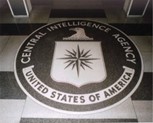By 1961, the insurgency was growing and the in-coming Kennedy Administration put the blame on the repressive policies of Ngô regime. The Kennedys were also upset that Diệm’s brothers Cẩn and Nhu, and their spymaster Tuyến, were smuggling opium out of Laos and using the profits to finance a vast agent network targeted against Diệm’s political opponents. Having just endured the Bay of the Pigs fiasco, the Kennedys were angry at the CIA, which had trained many of the agents and commandoes Nhu, Cẩn, and Tuyến used in their smuggling operations.
Compelled to correct the situation, the CIA created the proprietary airline, Vietnam Air Transport, and tasked it with flying CIA-trained commandos into North Vietnam via Laos and the Gulf of Tonkin. Tuyến’s opium smuggling operation, however, continued unabated, in league with Air Force Major Nguyễn Cao Kỳ’s First Transport Group, which participated in CIA-organized commando operations.
Be Sure to Visit the Series Homepage Daily for New Content!
In another, more successful attempt at reform, Diệm was persuaded to create an “apolitical” Central Intelligence Organization (CIO) modeled on the CIA itself. The CIA’s station chief at the time, William Colby, in an interview with this writer, credited this move as the beginning of Phoenix program.
“The Central Intelligence Office (Phủ Đặc ủy Trung ương T́nh báo) was the national strategic intelligence agency for the GVN,” Nhuận explained. “It was created by Executive Decree No. 109/TTP and signed into law on May 5, 1961 by President Diệm. The CIO was directly under the President, while the National Police fell under the Minister of the Interior. The CIO was responsible for gathering and analyzing strategic and military intelligence information on North Vietnam and its branch in South Vietnam, the Viet Cong, as well as to report and advise the South Vietnamese government on national security.
“Before 1962,” Nhuận continued, “all civilian and military security organizations in Vietnam conducted secret activities to collect information in general, from military to political, from tactical to strategic. The CIO Plan was to have one common method and target. The civilian police and security services and the military agreed to conduct coordinated operations focusing on “infiltration and penetration” of the North Vietnamese apparatus in South Vietnam, including the Viet Cong. That was the collection method. The common target was the higher-level Viet Cong.”
The CIA provided the money and the equipment needed to put the CIO in business. Colonel Nguyen Van Y was named director of the CIO and provided with a building in Sài G̣n as his headquarters. Staff for the CIO’s Research and Administration branch were drawn primarily from the American-advised National Institute of Administration and Faculty of Law at Sài G̣n University. With few exceptions, military officers dominated the CIO’s Operations branch.
The CIO had three divisions. The first was the Foreign Intelligence Bureau (Cục T́nh báo Quốc ngoại) which worked exclusively outside South Vietnam and had offices in foreign nations like France, the United Kingdom, Japan, Thailand, Laos, South Korea, and Kampuchea.
“Like the CIA,” Nhuận explained, “the CIO’s primary mission was collecting information outside of the country. And in doing this it required military support apart from the regular army, so the CIA formed a new military organization: the 101 Unit. I did not know much about it, except that it was something like a military CIO specializing in military strategic information and document collection.”
A second Domestic Intelligence Division (Cục T́nh báo Quốc nội) was created and designed to infiltrate the North Vietnamese organization in the South, as well as its elusive headquarters, the Central Office for South Vietnam (COSVN). It worked at the strategic level – from the provincial level up to COSVN. It had departments for surveillance (Department K) and counterespionage (Department U); plus a political department to prevent coup d’etats (Department Z). Each of the four military corps zones had one Special Contact Mission under the Domestic Intelligence Division.
The third division was based at the CIA-advised National Interrogation Center (Trung tâm Thẩm vấn Quốc gia). This division was responsible for interrogating and processing prisoners.
While serving as chief of the Judicial Police Section at National Police headquarters in Ban-Mê-Thuột, Nhuận – who was recognized as an outstanding soldier and policeman with exceptional communication skills – was selected to join the CIO. His early association with Tom Grunwald and his admiration of the Americans in general were contributing factors.
“I believed that the CIA mastered everything,” Nhuận explained with an ironic sigh.

“In early 1962, there was a test to choose potential CIO personnel. Candidates were selected from the National Police, the Special Police, military intelligence, and the National Institute of Administration, etc. We were given a general test, polygraphed by a CIA specialist (who quizzed Nhuận about his opposition to the Ngô regime), and then sent for training by CIA instructors at the National Intelligence School in Sài G̣n. About one hundred students attended the first Advanced Intelligence Course.”
Nhuận was familiar with this class, which included women, but less so with members of subsequent classes. “My classmates were from diverse organizations and used aliases, and during the course we were strictly observed and not allowed to fraternize. I knew some of my classmates, including Nguyễn Văn Giang who was made chief of operations in my Special Operations Corps (SOC) team group in the Highland Region.
“The CIA instructors only appeared in their respective classes, then vanished. Colonel Nguyên Văn Y did not participate, except to come and preside over the closing ceremony. The most important person on the Vietnamese side was Lt. Colonel Trần Phước Thành, Director of the Advanced Police Training Center and later Director of Police and Security in Central Vietnam.”
Upon graduation, Nhuận was assigned to Central Highlands Region Special Operations Corps (Đoàn Công-Tác Đặc-Biệt) in Ban Mê Thuột. The SOC was code-named the Geographical Studying Group (Đoàn Khảo-Cứu Địa-Lư) and operated undercover as the Highland National Police Judicial Police Bureau (Pḥng Cảnh-Sát Tư-Pháp Nha CSQG Cao-Nguyên Trung-Phần). Nhuận was the deputy group chief in charge of personnel, liaison, and administrative support, which included translating reports and documents into English, and contacting the group’s CIA advisors. The National Police provided office supplies, weapons, and means of transportation and correspondence. The CIA paid for all the CIO’s expenses. There was a SOC team in each province, and each had its own CIA advisor.
CIO officers operated undercover, except when otherwise required, at which time they presented their credentials. As Nhuận recalled, they were friendly and cooperative in their professional interactions. They treated each other as equals, without ever mentioning their origin.
In this early stage, the SOC chiefs were usually high-ranking administrative officials without police or intelligence experience, and relied on their more experienced junior members.
“The SOC in which I participated was only one unit and not completely secret,” Nhuận noted, “because it required administrative support from the National Police. Otherwise, the SOC worked independently, while the Special Police worked with and within the National Police. The Special Police was responsible for public security; the CIO/SOC had no such responsibilities.”
Nhuận’s SOC specialized in gathering strategic intelligence through sophisticated infiltration and penetration operations. Its operations unit, for example, encouraged and helped secret agents join the VC in the jungle. But as an administrator, Nhuận was not yet involved in such highly compartmented operations and did not know who the agents were or how their secret files were handled. But he was learning the spy business and its many nuances.
The CIO and the Special Branch, for example, both attempted to penetrate domestic political parties, movements, organizations, and trade-unions. But unlike the Special Branch, the CIO also gathered information from North Vietnamese newspapers and books, and monitored Radio Hanoi and Radio NLF, as well as foreign news outlets like the BBC and the Voice of America. The CIO had a Radio Transmission Center, managed jointly with CIA-advised Taiwanese officials, to monitor news from Communist China relating to their intelligence operations in Taiwan and North Vietnam, as well as inside the RVN. The CIO worked closely with officials in Laos, Kampuchea, Thailand, Japan, South Korea, Hong Kong, and France, and placed officers inside those nations.
“The CIO had members planted inside almost all government agencies,” Nhuận said, “including the police, the army, the foreign affairs ministry and the embassies. It controlled the three most important newspapers in Sài G̣n; the general distribution company for books, magazines, and newspapers; and the telephone, telegraph, and long-distance systems. It had the cooperation of many important personages including chancellors, deans, and professors. It had branches in all provinces and big cities. “
Smaller and more sophisticated than the Special Branch, but not as corrupt as Tuyen’s “secret police”, the CIO became the nerve center of the counterinsurgency. And in this manner, Lê Xuân Nhuận became a participant at the highest level in a secret war which, to this day, remains largely undisclosed.

